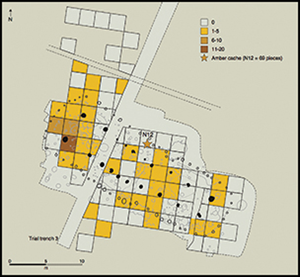Published online by Cambridge University Press: 21 December 2022

Amber was widely exchanged across prehistoric Europe and was transported long distances from primary sources on the Baltic and North Sea coasts. How did collection and working of amber develop and what were the effects of international exchange on local communities in Northern Europe? The authors present two recent, contrasting amber finds from Thy, northern Jutland: a cache of beads associated with the Early Neolithic Funnelbeaker Culture (4000–3300 BC); and evidence from a Late Bronze Age (1100–500 BC) non-elite settlement that suggests coastal amber collection was independent of elite control. Set within a review of amber's changing roles in prehistoric Thy, these finds evidence shifting local, regional and international connections.